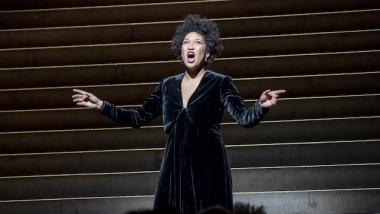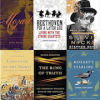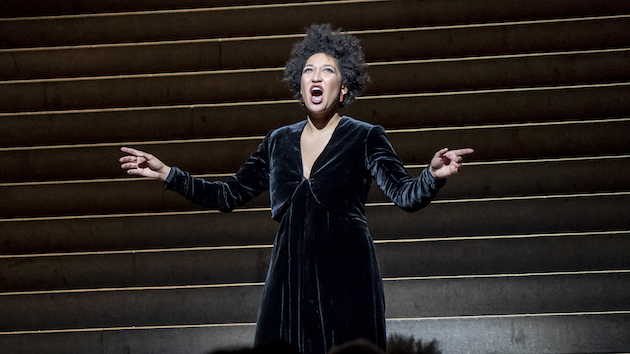
There were absolutely no bananas. At first glance, the program for soprano Julia Bullock’s Perle Noire: Meditations for Joséphine (Metropolitan Museum of Art, January 16–17) suggested a straightforward revue in tribute to Joséphine Baker, the sensational black Jazz Age performer who once titillated Parisian audiences by dancing in a skirt of synthetic bananas. Instead, Bullock — with members of the International Contemporary Ensemble; composer, pianist, and percussionist Tyshawn Sorey; and director Zack Winokur — offered a singular theatrical experience brimming with grief, resilience, and fury.
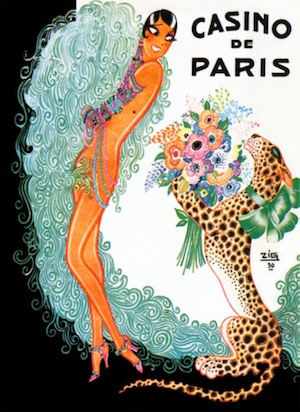
The evening nominally comprised a set of Baker’s cabaret numbers, but Sorey is credited with writing the music, and with good reason. The songs aren’t so much arranged as deconstructed, pulled apart at the seams, and splayed out with their musical innards laid bare. A dissonant piano chord here, a warped alto-flute melody there, daubs of color from the guitar and saxophone coming together and falling apart, with passages of regular pulse few and far between — the effect was like lovingly examining the exploded fragments of an exhausted world, all arrayed in a jagged halo around the spine of Bullock’s voice.
And what a voice it is. Bullock’s soprano is graceful and lithe, finely wrought silver filigree in the top of her range and imposing bronze at the bottom. Her ability to convey emotion through tone alone is exquisite. In the opening “Bye Bye Blackbird,” she was warm and welcoming; by the concluding “Terre Sèche,” she was stern and implacable, etched in timeless stone like the names of the robber baron donors immortalized on the museum walls around us.
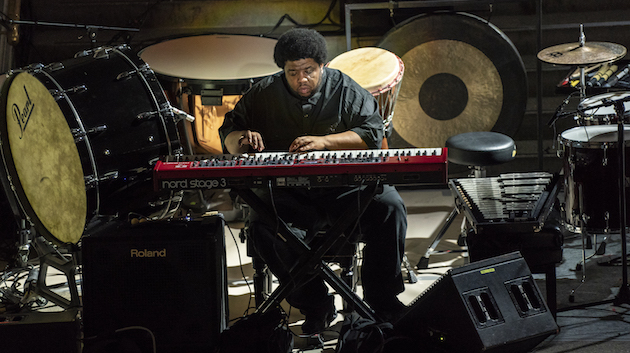
In between the songs were monologues written by Claudia Rankine, drawing from Baker’s words and adapted by Bullock and Winokur. They described events in Baker’s life, from her career in Paris show business to her engagement with the U.S. Civil Rights Movement, but they also explored her motivations for leaving America and allowing herself to be cast through a relentlessly exoticized and eroticized lens. At the end of one of these monologues, Bullock demanded “Who do you see when you look at me? Who do you see?” She gave a disdainful look at the quiet crowd, then stalked up the stairs of the Met’s Great Hall to unleash an astonishing coup de théâtre.
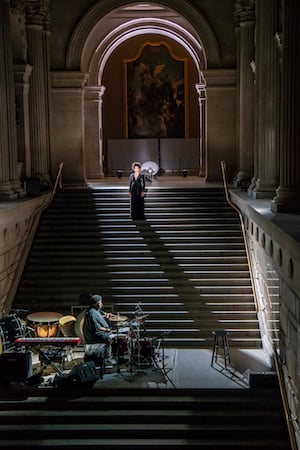
Up to that point, Bullock had made no pretenses of embodying Joséphine Baker. She had gestured at some of Baker’s choreography in the lighthearted “C’est ça le vrai bonheur,” but it was only a tip of the hat; Bullock was still very much embodying Bullock. Now, she threw herself into embodying Baker in a dance that took the building blocks of a charleston and turned them into a nightmare. Michael Schumacher’s choreography had Bullock hurl herself down and up the imposing staircase, alternately giving in to sexualized 1920s undulations and fighting against them, clawing at her arms and head as though trying to tear off her skin. The sequence unfolded in absolute silence save for Bullock’s sharp breaths and guttural exhalations. It was a visceral, harrowing display, a body buckling under the expectations forced upon it.
The music that followed began with groaning multiphonics from the bassoon and a seismic upheaval in the percussion before an extended, sere passage of barren song. Repeated explosions from the bass drum lost some of their effectiveness through overuse, but they paved the way for a radiant fragment of instrumental music to blossom into a chorale suffused with divine grace.
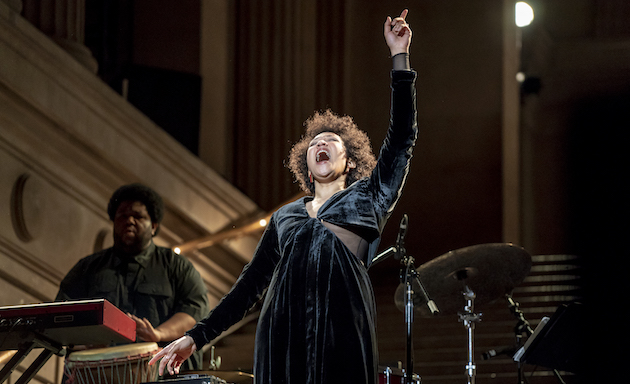
The coda that followed ran long, but Bullock’s voice, transmuted from silver to steel as she prayed for “a little happiness on Earth,” salvaged the ending. Perle Noire is a complex meditation on a multifaceted historical figure, but it’s more than that, too. It’s an elegy for the untold violence of white supremacy, and it’s a determined resolution to keep on living anyway. If Bullock ever presents it near you, see it if you possibly can.

